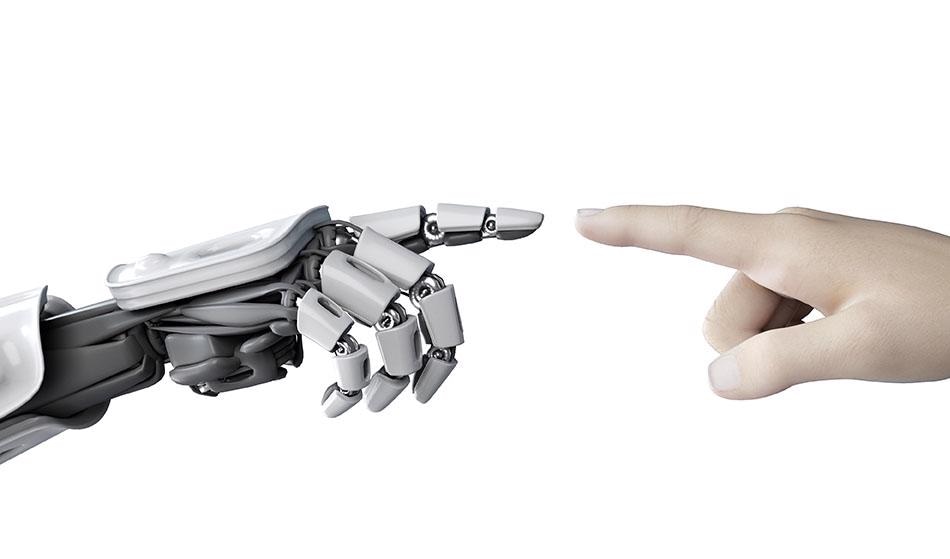Oct 22 2012

Sebastian Kaulitzki / Shutterstock
Touch sensing has a major role in performing exploration and manipulation activities in a robotic platform. The application of touch sensing technology has expanded over the years with the development of various sensors including optical, resistive, capacitive, ultrasonic, magnetic and piezoelectric. As these sensors are large in size they are not suitable for the parts of robots like fingertips which require more sensors with high density for fine manipulation. The best solution to overcome this problem is miniaturization.
To better understand the concept of piezoelectric polymers for robotic application the following video by PI describes the basic functional principle to a piezoelectric effect.
The Piezoelectric Effect in Motion Control - how does it work: Overview of Piezo Mechanisms | PI
Piezoelectric oxide semiconductor FET (POSFET) tactile sensing arrays with high density can be developed for use in the fingertips of humanoid robots. In a POSFET sensing device the gate area of a metal oxide semiconductor transistor (MOS) is coated with a thin film of polyvinylidenefluoride trifluoroethylene (PVDF-TrFE). Therefore, the POSFET device comprises a transistor and transducer and has the ability to sense and process partially at same site. In addition, the combination of electronics and sensing material would improve the signal to noise ratio, resulting in increased force sensitivity.
Tactile Sensing - A Definition
The two major touch senses in humans are kinaesthetic and cutaneous. Receptors embedded in the skin provide sensory inputs to cutaneous sense and receptors embedded in joints, tendons and muscles provide sensory inputs to kinaesthetic sense. Researchers have identified another sensory system known as the haptic system which utilizes distal objects information from both cutaneous and kinaesthetic systems. Therefore, human tactile sensing serves as a basis for robotics tactile sensing.
Robotics tactile sensing is the process of detecting and measuring contact parameters in a predetermined area followed by processing the signals at the sensor level before performing perceptual interpretation. Touch sensing can be called tactile sensing at a single point of contact. The related terms of human cutaneous and kinaesthetic senses are extrinsic/external and intrinsic/internal senses respectively.
In robotics, extrinsic touch sensing can be realized with the help of a coordinated group of touch sensors or tactile sensing arrays. Extrinsic touch sensors are placed near the contact interface to derive the localized region data and intrinsic touch sensors are located inside the system’s mechanical structure to acquire the contact data such as magnitude of force by making use of force sensors.
Advantages and Disadvantages
The following section identifies the advantages of different tactile sensors:
- Resistive sensors are sensitive and inexpensive
- Piezoresistive sensors have low noise and cost, simple electronic structures and good sensitivity
- Tunnel effect sensors are flexible and sensitive
- Capacitive sensors are inexpensive, sensitive and available in commercial A/D chip forms
- Optical sensors are fast, flexible, sensitive and have resistance to interference
- Ultrasonic sensors have good force resolution and dynamic response
- Piezoelectric sensors have dynamic response and high bandwidth
The following section will discuss the disadvantages of different tactile sensors:
- Resistive sensors have high power consumption and will generally only detect single contact point, and do not measure contact force
- Piezoresistive sensors are sensitive to temperature (both frail and stiff) and produce non-linear response and signal drift
- Tunnel effect sensors produce non-linear response
- Capacitive sensors have complex electronic structures and a tendency to create cross-talk
- Optical sensors have high power consumption and result in the loss of light due to micro bending
- Ultrasonic sensors are sensitive to high temperatures and the utilization of these sensors is limited at low frequency
- Piezoelectric sensors do not have a robust electrical connection, and are therefore sensitive to high temperatures
Working Concept – Touch Sensor
In the event of a mechanical force being applied to a piezoelectric film, which operates in the sensing mode, a charge or voltage is generated. This charge is related to the applied force as follows:
Qt =d33 x F
where Qt is the charge generated on an axel upon the application of force and d33 is the piezoelectric constant.
The charge present in the induced channel of a field effect transistor (FET) can be modulated by the charge in the piezoelectric film by connecting the film to the gate terminal of FET or by directly placing the film on the gate area of the it. The FET device further amplifies the charge which is then processed by an electronic circuitry. Hence, force is converted into voltage by each sensing element.
Sources and Further Reading
- Dahiya. R.S, Metta.G, Valle.M, Lorenzelli.L, Adami.A, Piezo-Polymer-FET Devices Based Tactile Sensors for Humanoid Robots, Robotics, Brain and Cognitive Sciences Department, Italian Institute of Technology,Italy, Springer 2010, Volume 54:pp 369-372
- Dahiya. R.S, Valle.M, Tactile Sensing for Robotic Applications, Sensors: Focus on Tactile Force and Stress Sensors, Jose Gerardo Rocha and Senentxu Lanceros-Mendez (Ed.), ISBN: 978-953-7619-31-2, InTech, Available from: http://www.intechopen.com/books/sensors-focus-on-tactile-force-and-stress- sensors/tactile_sensing_for_robotic_applications
- Dahiya. R.S, Metta.G, Valle.M, Lorenzelli.L, Adami.A, Bio inspired Tactile Sensing Arrays, Robotics, Brain and Cognitive Sciences Department, Italian Institute of Technology, Italy
This article was suggested on the 29th April, 2019.